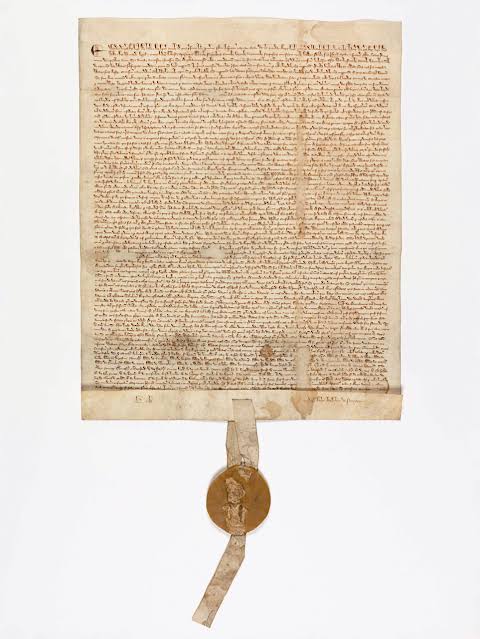The Original Democracy Model — The Father Of Magna Carta

Britisher talked of the Magna Carta to the World which is kept in the Salisbury Cathedral, and recognised by the Western Countries as the first written “Constitution”.
Well is it ?
While performing Bhumi Puja for new Parliament Building, the PM mentioned about Uthiramerur. What is it?
Uthiramerur (Tamil Nadu) is a model of democracy.
It is situated in Kancheepuram district, about 90 km from Chennai. It has a 1,250-year old history. Uthiramerur is a panchayat town in Kancheepuram district in the Indian state of Tamil Nadu. It is noted for its temple inscriptions that describe a self-governance system (Cholan Kudavolai ) existing around 7th to 9th century CE.
There are three important temples in this town. The three temples have a large number of inscriptions, notably those from the reigns of Raja Raja Chola (985-1014 A.D.), his son Rajendra Chola, and the Vijayanagar emperor Krishnadeva Raya.
During the period of Parantaka Chola [907-955 A.D.] The Vishnu temple in Uthiramerur is very unique since its said to be built by Vishwakarma, and it’s the first Ashtanga vimana to be constructed.
Certainly a place to visit to know and understand the richness of our ancient glorious India…
it was a village whose administration was honed into a perfect system through elections.
In fact, inscriptions on temple walls in several parts of Tamil Nadu refer to village assemblies.
“But it is at Uthiramerur, on the walls of the village assembly mandapa itself, that we have the earliest inscriptions with complete information about how the elected village assembly functioned,” says R. Sivanandam, epigraphist at the Tamil Nadu Deptt of Archaeology.
It testifies to the historical fact that nearly 1,100 years ago, a village had an elaborate and highly refined electoral system and even a written constitution prescribing the mode of elections.
The details of this system of elective village democracy are inscribed on the walls of the village assembly (grama sabha mandapa), a rectangular structure made of granite slabs “It is an outstanding document in the history of India.
It is a veritable written constitution of the village assembly that functioned 1,000 years ago,” says Dr. Nagaswamy famous archeologist.
The inscription, gives astonishing details about the constitution of wards, the qualification of candidates standing for elections, the disqualification norms, the mode of election, the constitution of committees with elected members, the functions of those committees, the power to remove the wrongdoer, etc…”.
The villagers even had the right to recall the elected representatives if they failed in their duty.
Some salient features of the inscriptions….
The village was divided into 30 wards, with one representative elected for each.
Those who want to contest must be above 35 years of age and below 70.
Only those who owned land that attracted tax could contest elections. Such owners should possess a house built on a legally owned site (not on public land).
A person serving in any of the committees could not contest again for the next three terms, each term lasting a year.
Elected members who accepted bribes, misappropriated others’ property, committed incest, or acted against the public interest suffered disqualification.
The entire village, including infants, had to be present at the village assembly mandapa when elections were held. Only the sick and those who had gone on a pilgrimage were exempt.
Remember some British chap with half baked knowledge had pontificated that just one bookshelf in any British library contained more knowledge than the entire knowledge of the Indians gathered through their entire history !!!!!.
In fact, T. N. Sheshan, former election commissioner, was a bit dejected when he was appointed as Chief Election commissioner.
He went to meet Paramacharya, who was 97, when a visibly disappointed Seshan came to meet him.
He immediately sensed the cause of his disappointment and counseled him to treat the transfer as an opportunity granted by God to serve the Indian public.
He had suggested Seshan to visit the Uthiramerur temple and read through the details of electoral regulations prevalent in India about 1000 years ago, including qualifications of candidates who can contest elections.
In the words of Shri Seshan, The credit for Electoral reforms must go to Kanchi Mahaswami, but for who this would not have been possible. At 97, he had such clarity and described the minute details of the electoral rules embossed on the northern walls of the Uthiramerur temple. And mentioned to me that even implementing a tenth of these reforms, would be a great service to India.
The rest is history.
In the words of columnist TJS George, “Seshan showed what one man could do to ensure that democracy did not become a hydra-headed monster.
In time Seshan retired, but the monster was set free.”
It is doubted if many of the politicians in TN and rest of the country know of this.
It was wonderful that our PM had shared this on national stage so that everyone across the country will know the richness of our culture.




